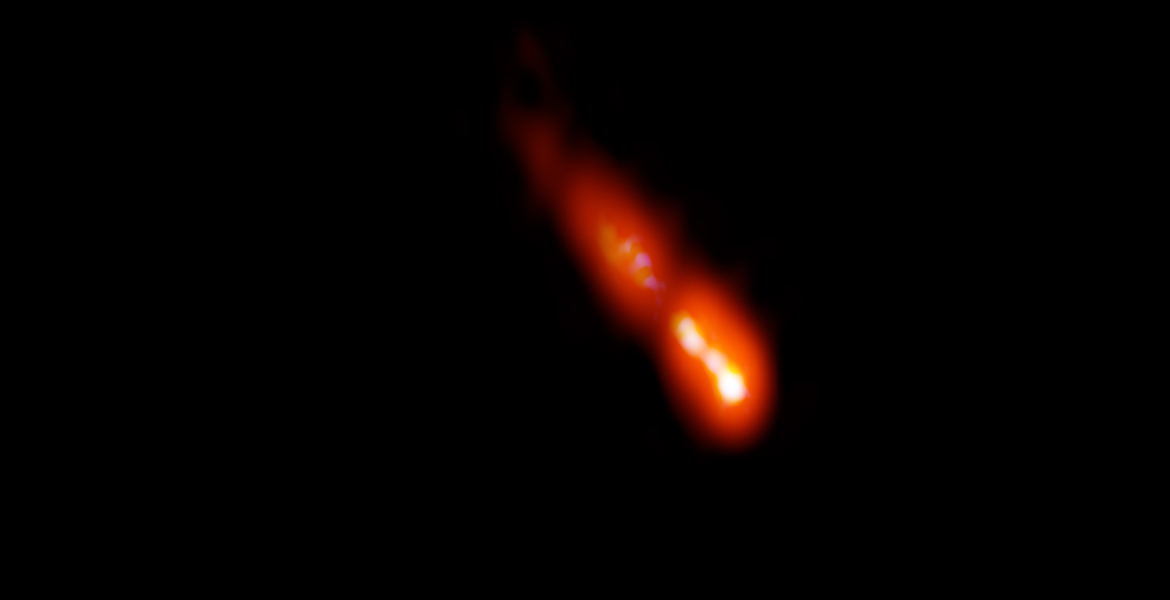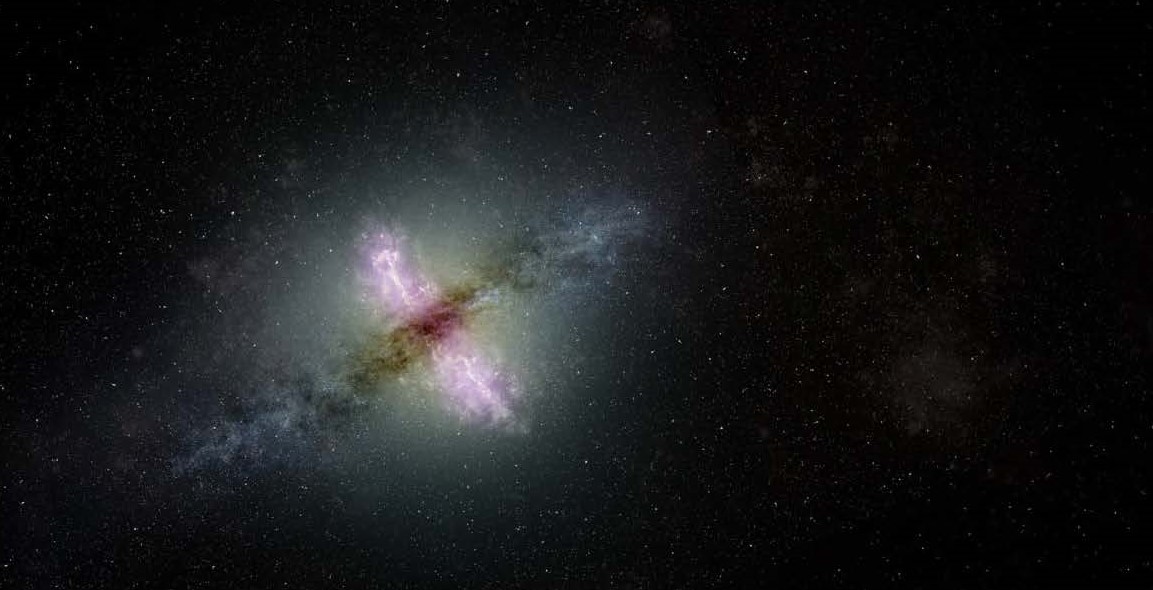The supersharp radio “vision” of the National Science Foundation’s Very Long Baseline Array (VLBA) has revealed previously unseen details in a jet of material ejected at three-quarters the speed of light from the core of a galaxy some 12.8 billion light-years from Earth.




